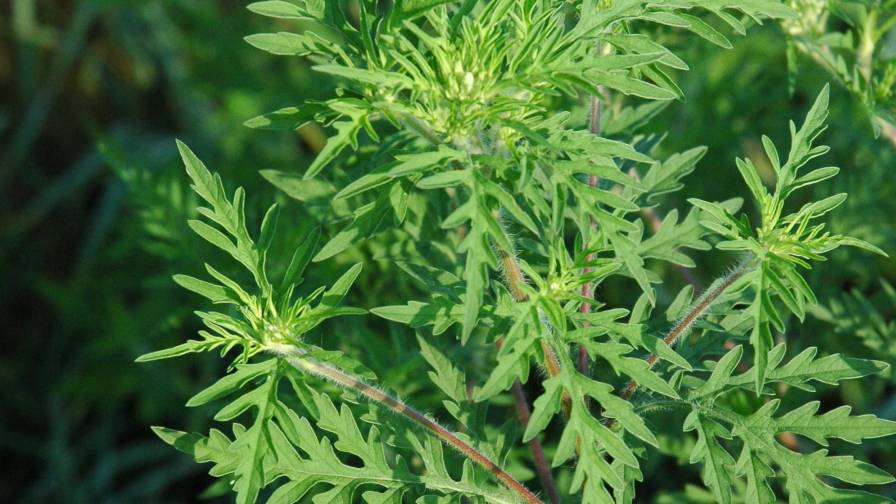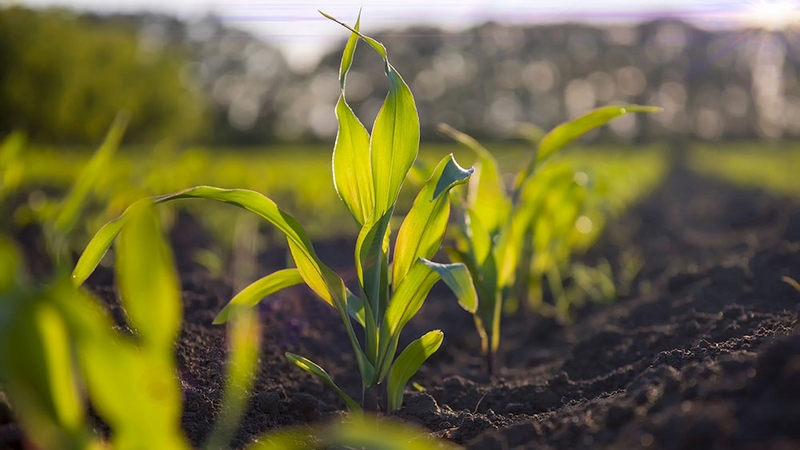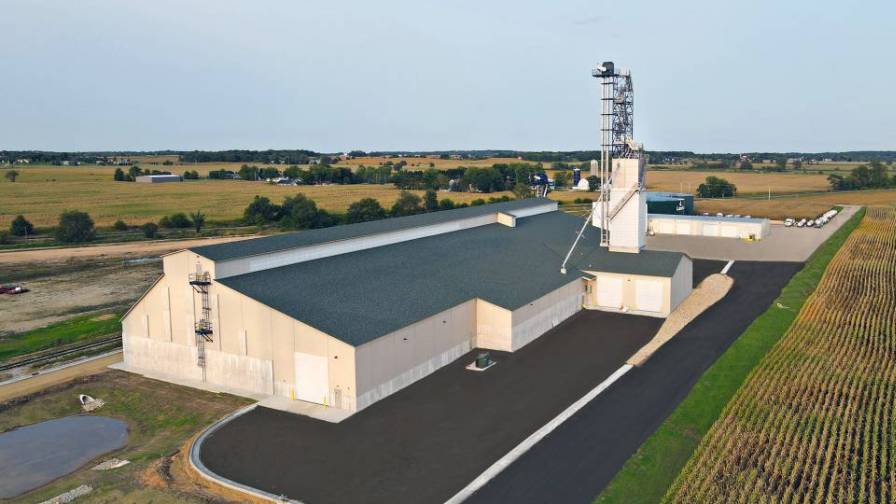Dicamba Update: In Illinois, Will it Be Three Strikes, You’re Out?
Jean Payne has served as President of the Illinois Fertilizer & Chemical Association since 2004, “back in the days when we didn’t dream dicamba would be used in the summertime,” she tells CropLife in an interview on Feb. 20. She opens up on the current challenges and future of dicamba for U.S. retailers and growers in a state ruled by urban politics.

“I always have to remind our members and others that it’s how people perceive us that’s important – not how we perceive ourselves.” – Jean Payne, IFCA President
CL: As President of IFCA, can you describe what your experience has been like surrounding the dicamba-resistant technologies, now going into their third year of use?
I always remind myself and everybody that while Illinois is a big I-state, we are nothing like Iowa or Indiana. All of our politics are urban, so therefore we have got to be extremely proactive and courageous in some of the things we do on our own terms, which can sometimes cause our members and farmers to be uncomfortable.
We try to take bold actions to be proactive so we can avoid having to go to our legislature, which is very urban, and tries to get an understanding of why we use pesticides and why we use fertilizers – not to mention the challenge with how the consumer public generally feels about GMOs today. Those things are emotional hotspots with the media, and so we try to avoid ever being in that situation by being very proactive. Sometimes we do things in Illinois that people in other states wouldn’t have to do. That’s how I would describe our mindset.
When it comes to dicamba, I think we’re at the place right now in Illinois, where we’re about to embark on some things that you won’t see other states doing to try to get back into control of this issue. We led the nation in the number of misuse complaints last year.
CL: I didn’t realize Illinois’ numbers were that high in 2018.
Yes – we led the nation (with 330 dicamba complaints). It’s very unfortunate, because I really do think the ag retailers did a tremendous job with this very difficult-to-manage product. It’s just that the environmental conditions in Illinois – particularly with wind and the urban nature of our society – make it extremely difficult.
I’m the face of the pesticide industry in Illinois. That’s how the legislators know me; that’s how the environmental groups know me. Whatever I do and say has to be credible. We can’t just pretend everything is OK, when everything is not OK in the public’s perception. We may think in agriculture, ‘Yeah, those beans were cupped, but they yielded better, so everything’s fine.’ While we can feel that way in the ag sector, the public perception is not that way. I always have to remind our members and others that it’s how people perceive us that’s important – not how we perceive ourselves.
CL: Yet, EPA renewed the label even though the overall complaint numbers didn’t drop by much, if at all. Were you surprised by that?
I was not surprised that they renewed it. The tendency of the federal government at this point is not to be regulatory restrictive. I think that when you change a label every single year, though – it came out in 2017, changed in 2018, and then changed in 2019 – it’s a troubling trend. Our industry has always been very good at taking a new product, understanding how to use it, and being consistent. Then these labels change every year to try to address what is perceived to be the problem when, in reality, there a lot of things that an applicator can never control that are probably the larger part of the problem.
The challenge with dicamba is, many times, beyond the applicator’s control. I think our industry has always known this about dicamba for the last 30 years. So, the constant efforts to try to tweak the training, buffers, and so on are all well and good, but most of us in our heart of hearts know it’s an exercise that we’re going to go through, but we probably expect the same kinds of outcomes.
CL: Do you expect to see a large number of complaints again this year, then?
I don’t want to say I expect it, but we’re prepared for it. We have to be prepared so it doesn’t surprise us. We will have large adoption of Xtend seed in Illinois. We are the largest soybean-producing state in the U.S., and our growers are progressive.
However, I will say there are going to be plenty of LibertyLink beans out there, and our non-GMO acres are going to be up in 2019 in Illinois as well. The coexistence factor is very much on my mind, because we still have a huge coexistence challenge with soybeans and all of the other specialty crops and sensitive areas.
CL: What do you think of the new restrictions on the label this year – will they be helpful?
The major change that hit Illinois was the requirement for all applicators to be technically certified applicators. Our system in Illinois was set up such that we had licensed spray operators reporting to certified applicators. The majority of those doing dicamba applications were licensed spray operators. So, we had upwards of 4,000 spray operators that had to become certified applicators, which meant taking yet another exam on top of the one they had already passed to be a certified operator. They had to take essentially the same exam that people take to make recommendations on what products to use and when, versus, (the prior scenario, wherein) a spray operator’s job is ostensibly to apply product that the certified applicator recommends.
Now all of a sudden, we had to get all of our spray operators up to that level of certified applicator, which was a huge undertaking, and caused an incredible amount of anxiety, expense, and frustration in Illinois.
CL: Where is Illinois at with the certification process right now? Will everyone be trained in time?
I think we are probably 80% of the way there, and unfortunately, it’s a hurdle that not everyone will be able to get over. You may have very good spray operators that are taken out of the dicamba picture because they may not be the best test-takers in the world. There is nothing on the applicator exam that pertains to how to successfully make a dicamba application. This is an exercise we’re going through because the label says you have to do it, but in reality, while extra training is never a bad thing, the consensus is that this is not going to be the silver bullet that is going to make dicamba a non-issue in Illinois.
I give our retailer members so much credit. Once we determined that this is what they had to do, they went about the task of getting their guys trained, a lot at their own expense, and then sending them to testing and upgrading to get the applicator license, which is more expensive than an operator license. I don’t think most people realize what we went through in the ag retail sector to get that done, in order to be able to serve the farmers of Illinois. A shout out to our industry for doing that – it was tremendous.
That was the one thing on the label that caught us most by surprise, and was the last thing we expected, and that took the most time this winter.
CL: Earlier, you mentioned that Illinois would have to do things other states would not to keep dicamba available. Can you talk more about that?
Just this week, we have a brand new administration. We have a new governor, a new director of agriculture, and 50 new legislators. Our new director of agriculture, John Sullivan, having been an Illinois senator for many years, is a great guy and is very qualified to be director of ag. I don’t think we could ask for anything better. He immediately came into the role and recognized that because of the number of complaints we had and the urban expectations of our legislature and our society, that we have to be aggressive.
We are in the process of looking at 24(c) label changes in Illinois, to hopefully enable the industry in Illinois to self-regulate to reduce the number of dicamba complaints. There will very likely be a cutoff date at a minimum.
CL: When should we expect an announcement?
It will hopefully be announced by March 1st.
We are trying to do it the best way possible for everybody involved: the applicators, the registrants, the Department of Ag, the farmers, and the environmental groups who are watching us very closely. We have a lot of people to make happy, which is never an easy thing to do no matter what it is, but we’re in a good place. IFCA has been at that table from day one. Our organization always wanted to see additional things done to be proactive. We have a Department of Agriculture that is very much in line with our perspective.
CL: The rules and restrictions surrounding dicamba would seem unprecedented. In 2019 there are even more restrictions. With so much already on their plate – year after year of low commodity prices and now, tariffs – how do you see retailers handling it?
Our retailers always have a terrific attitude. Whenever there is a new technology available in Illinois, they want to use it. I think they are as dedicated as they can possibly be to doing this the right way. They have stood quite firm in times when they have had to tell farmers, ‘No, you cannot spray your field.’ Our retailers have done a very good job. I still think they have frustration, though, when they are doing the best job they know they can do, and they still see off-target indications. They are still of the mindset that they ultimately would like to have more answers as to why that happened. The label has changed; the product itself has not changed.
I will say, the first year we used it, we had a lot of contamination issues, because no one realized the hygiene involved with dicamba. In 2018, we brought those issues down substantially. What a credit to the retailers who immediately recognized what happened and spent a lot of time and money to remove the contamination factors very successfully.
But the off-target movement, we haven’t quite been able to be as successful with that. Maybe 2019 will be the year that we will be able to find a way to better manage that. It really depends on what Mother Nature hands us.
Illinois is a windy state. We don’t have thousands of wind towers in central Illinois for no reason. I have to sort of laugh about it, because this technology is adopted widespread in central Illinois, and you go out and look in any direction and you see wind towers. They are there because we provide a lot of wind in Illinois, and yet this label has a 10-mph restriction including gusts. If you just look at it with your eyes wide open, you say, that’s going to be a challenge.
CL: Have there been any points of confusion in the new label?
In Illinois, our regulatory structure is such that, our Pesticide Act is designed to be cumulative. I always have to remind people, it doesn’t matter if there is yield impact on the soybean field or specialty crop. If there is evidence of off-target movement, then it’s a violation of the Pesticide Act, and that violation goes back on the applicator’s license.
For decades, our applicators might get a violation once every blue moon, and now they’re getting them on a regular basis with this technology. So there is a concern, how many violation letters can I get from the Department of Ag before I have to worry about my license being suspended?
CL: What are the consequences?
It’s cumulative. Usually, your first couple of violations is a warning letter from the Department of Ag warning you were off-label. If it happens again, that warning often escalates to a monetary penalty. The penalties will go up the more of those that you experience.
The best applicators that the retailer has are the ones they put on dicamba. And yet it’s the best guys that get these warning and violation letters. The thing that people don’t realize, is that this is difficult on the psyche of the operator. They take a lot of pride in what they do, and now they’ve taken this extra test after much studying and anxiety. If they go into 2019 and still find themselves getting these letters, despite having worked to the best of their ability with their training and knowledge, and struggle with keeping it on target, just because of the nature of the product, it begins to impact them psychologically, I think. You want to do a great job, and people say, it’s still not good enough.
CL: I would think that it would be stressful.
It’s so hard to get people to want to do these jobs, to spend your summer in a spray rig, and then have people yelling at you because their soybeans look like they have dicamba damage, and you were the guy in the spray rig that day. I think the industry needs to have a better appreciation for what the operators are going through here, in their best effort to serve their farmer-customers, which is always their number-one goal.
CL: I was speaking with Dr. Greg Kruger about his concern about the DRAs in the dicamba tank-mix. He says DRAs are creating too-large droplets that could lead to resistance down the line. With all of the application worries that retailers and applicators already have, how do they approach something like this?
At our convention, we also had presentations on the different pH levels in the tank-mixes and the cautionary advice on that. I think our members appreciate getting that information, but they sort of scratch their heads and say, ‘What am I supposed to do with this?’ Here’s yet another new thing that is thrown on top of everything else, and now we’re unsure about what we can control on that side.
Our members’ consensus is, we’re three years into this, and we’re just now realizing that pH levels and DRAs are a problem? There’s a general feeling of, how did this happen?
Our industry has such a good track record of judicious pesticide use, that when we see something like this, we kind of go, why is this happening? Can we continue to assure the public trust in how we use pesticides? This technology has really challenged our ability to do that, in my opinion.
I know that people from the outside looking in say, why is IFCA supporting more label changes? Why are you looking at a cutoff date? It’s because we know that on the other side of the coin, the expectations of the public in Illinois are such that if they feel like we can’t keep this product on target, I have no doubt that they would have no problem taking it away from us completely.
That is my number-one concern: We get down the road, and we have all of this investment in seed technology, dicamba-tolerant traits, and wonderful seed genetics, and we have no legal product in which to take full advantage of the technology, because we were unable to steward it properly. Or, maybe we are unable beyond our physical means to do it. I’m concerned about that.
CL: Do you have the sense that this year is the bellwether for Illinois?
This is definitely the year. We had the first year where we had a lot of complaints, and we had the second year where we had more complaints. I don’t want to focus just on complaints. For every farmer that was willing to formally complain, there were many who didn’t formally complain, but still said, ‘Hey, this is a problem on my field.’ They don’t know if it was going to result in yield loss, and then had to worry about it all summer. It causes anxiety in the grower community, too.
There is something to the ‘three strikes, you’re out’ term. There are a lot of things in life you can say that about. From the outside looking in, we have to be cognizant that there are a lot of people watching us saying, is it going to be better this year?
If you sit through the dicamba training, in many cases, there are fields that are not good candidates for dicamba. Part of the challenge is making the growers understand that if you want to use this technology, you probably shouldn’t be surrounded on all four sides by non-GMO soybeans. The applicator or retailer is going to tell you no.
Trying to get growers to understand why we have to say no has been another challenge. So many growers that used to spray these products themselves go to the dicamba training, and then I hear them say to themselves, ‘Well, I’m just going to have my retailer spray next year. This is way too complicated.’ They just assume that there’s going to be a retailer out there that is going to be able to do it. The retailer only has so many people to cover so many acres in a very small amount of time, and look for a day with wind less than 10 mph. Then you have more and more growers saying, ‘I don’t want the liability. I’ll have my service company to do it for me.’ Again, it’s another added layer of pressure on the retailers.






